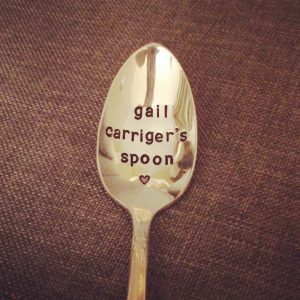Pace is an interesting concept for readers to grasp but it’s something authors talk about all the time.

It’s not the physical movement of characters through space and time within the story, nor is it the overarching journey those characters are on (be it emotional or physical or both).
That’s plot.
1. So what do you mean by pace, Miss Gail?
Pace is literally how fast readers turn the page. Pace has to do with everything from the size of the paragraphs, to sentence structure, to word choice, to when and where dialogue interrupts description. Pace involves the tone of voice in narration, introduction of new characters, encounters between characters, comedic or suspenseful moments, and revelations about feelings.

If you feel like a book is boring, or drags you down, or is work to read then either the author has a pacing issue, or you don’t like how they are handling pace. I sometimes describe such books as too chewy.
Different genres of books, and even different sub genres, tackle pace differently. Suspense has a much faster pace then a cozy mystery, for example. Contemporary romance is faster paced than historical, YA fantasy is faster than epic fantasy, and so forth. I tend to avoid epic fantasy for example because I find the pace mind numbingly slow.
A good developmental editor helps her author, first and foremost, with pacing. Usually, it’s her job to identify flaws in pacing, when reader attention drifts. A good DE may even try to determine why it’s happening. A bad one will attribute all flaws to plot.
2. Plot is still pretty darn important.
In romance, for example, the plot of the relationship is vital, from when the first kiss happens, to when each character admits to their feelings about the other (or others). And that’s because there are, indeed, elements of pacing in plotting.

You’ll hear authors sometimes refer to these key plot moments as “pulse points” or “beats.” When and where a writer drops these elements, and how frequently they are deployed, dictates reader involvement and focus.
3. But still not as important as pace.
Here’s an interesting note to end on.
Did you know that when two professional authors get together to talk, they rarely tell each other is the plot of their respective novels? In fact, describing plot is a clear indication of an amateur author, or a non-writer. In some circles, it’s considered quite rude.
Why?
Because plot is a whole lot less important than pace, and pace cannot be described. (That’s why this blog post is so rambly.) This is why authors tend to rely on an elevator pitch, even after decades in the game, even sitting across the table from an author friend.
This and more included in various of my teaching decs and courses for authors. Find out more about those here.
Yours,
Miss Gail
10 More Installments of Gail talking about publishing?
- 10 Things About Publishing This Author Wishes Everyone Knew
- 30+ Blogs & Podcasts for Authors
- 7 Tips for Getting Over Writer’s Block
- What is an author style guide? How about a style sheet?
- How to Write (and Not to Write) an Author Bio
- The Pros & Cons of Cons
- 7 Side Effects of Being a Full Time Author
- Pen Names, Cover Art & Reader Betrayal
- Learn to Let Go of the 10%
- Writing Humor
Find my books
Direct | Amazon | Kobo | Bookshop.org | B&N | Apple | Foyles | Mcnally Robinson | Angus Robertson
Here’s a printable Downloadable Checklist of ALL my books!
- Did you miss my latest release? Want more sneak peeks, free goodies, gossip, behind the scenes info? This goes to my Chirrup members, because I love them bestest. Sign up here.
BOOK DE JOUR!
- Tired of the hero’s journey?
- Frustrated that funny, romantic, and comforting stories aren’t taken seriously?
- Sad that the books and movies you love never seem to be critically acclaimed, even when they sell like crazy?
The Heroine’s Journey is here to help.
Multiple New York Times bestselling author Gail Carriger presents a clear concise analysis of the heroine’s journey, how it differs from the hero’s journey, and how you can use it to improve your writing and your life.
GAIL’S DAILY DOSE
Your Tisane of Smart . . .
Poem: How to choose a wife, Victorian Style “If you’ve seen her drink three cups of tea”
Quote of the Day:
Tags: Beginning Writers“I always pass on good advice. It is the only thing to do with it. It is never of any use to oneself.”
~ Oscar Wilde


Hmm. I’ve never really thought about pace before, but now that you mention it I can remember times within your own books when my speech would increase in velocity (I read aloud to my mother and twin sister) until it felt like a miracle that I hadn’t stumbled yet, simply because the prose demanded it. And yet other times when I’d slow, throat thick with feeling, because each word loomed. (I am of course, speaking specifically of the rapid-fire dialogue between the Maccons in the fourth chapter of Imprudence and the heartbreaking description in chapter ten of Heartless, respectively.) Bravo.